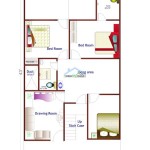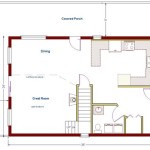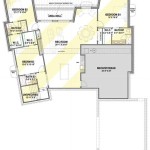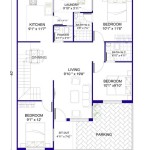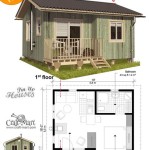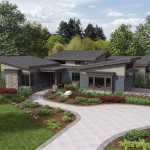House Plans with In-Law Suites: A Comprehensive Guide
The concept of multi-generational living is experiencing a resurgence, driven by factors such as rising housing costs, increased family caregiving responsibilities, and a desire for closer familial bonds. As a result, house plans that incorporate in-law suites are becoming increasingly popular. An in-law suite, also known as an accessory dwelling unit (ADU) or granny flat, provides a self-contained living space within or attached to a primary residence. This allows for independent living arrangements while maintaining proximity and support between family members. This article explores the various aspects of house plans with in-law suites, including design considerations, legal implications, and potential benefits.
Defining the In-Law Suite: Key Features and Characteristics
An in-law suite is more than just an extra bedroom and bathroom. It is typically designed as a self-sufficient living space, offering privacy and independence for its occupants. While designs vary, most in-law suites incorporate several key features: a private entrance separate from the main house, a living area for relaxation and entertainment, a fully equipped kitchen or kitchenette to allow for meal preparation, a bedroom or sleeping area, and a bathroom with shower or bathtub. The level of separation and independence can vary depending on the specific needs and preferences of the homeowner and the intended occupant.
The size and layout of an in-law suite are often dictated by the available space, local zoning regulations, and the intended use. Some suites are designed as compact, efficient spaces for a single occupant, while others are larger and more elaborate, capable of accommodating a couple or even a small family. The design should prioritize accessibility and universal design principles, particularly if the suite is intended for elderly or disabled occupants. Features such as wider doorways, grab bars in the bathroom, and ramped entrances can significantly enhance the comfort and safety of the space.
Beyond the essential components, an in-law suite may also include additional features such as a laundry area, a small patio or deck, and dedicated parking. These amenities further contribute to the suite's independence and make it feel like a separate dwelling. The inclusion of these features depends on the available space, budget, and the specific needs of the occupants.
Design Considerations for House Plans with In-Law Suites
Designing a house plan with an in-law suite requires careful consideration of several factors, including the overall architectural style, the location of the suite within the property, and the integration of the suite with the main house. The design should aim to create a cohesive and aesthetically pleasing structure while ensuring privacy and independence for both the main house and the in-law suite.
One crucial aspect of the design process is determining the location of the in-law suite. Common options include attaching the suite to the side or rear of the main house, building it above a garage, or creating a separate, detached structure in the backyard. Each option has its advantages and disadvantages in terms of cost, privacy, and accessibility. Attaching the suite to the side or rear of the main house is often the most cost-effective option, as it allows for shared utilities and a more seamless integration with the existing structure. Building above a garage can be a good solution for maximizing space on a smaller lot. A detached structure offers the highest degree of privacy but is typically the most expensive option.
Regardless of the location, the design should prioritize privacy for both the main house and the in-law suite. This can be achieved through careful planning of the entrances, windows, and outdoor spaces. Strategic landscaping can also be used to create visual barriers and enhance privacy. Soundproofing measures, such as insulated walls and floors, can help to minimize noise transmission between the two living spaces.
Another important design consideration is accessibility. If the in-law suite is intended for elderly or disabled occupants, the design should incorporate universal design principles to ensure that the space is safe and comfortable to navigate. This includes features such as wider doorways, grab bars in the bathroom, roll-in showers, and lever door handles. The inclusion of an accessible entrance ramp can also significantly improve accessibility.
Finally, the design should consider the long-term flexibility of the in-law suite. As family needs change, the suite may be used for different purposes, such as a home office, a guest room, or a rental unit. Designing the suite with adaptability in mind can increase its long-term value and versatility.
Legal and Regulatory Implications of In-Law Suites
Building an in-law suite often involves navigating a complex web of local zoning regulations, building codes, and permit requirements. It is essential to research and understand these regulations before beginning the design and construction process to avoid potential legal issues and costly delays.
Zoning regulations typically dictate the allowed size, location, and use of accessory dwelling units (ADUs) on a property. Some jurisdictions have strict rules governing the construction of ADUs, while others are more lenient. Common zoning restrictions include minimum lot size requirements, setback regulations, and parking requirements. It is crucial to check with the local planning department to determine the specific zoning regulations that apply to the property.
Building codes ensure that the construction of the in-law suite meets safety standards for structural integrity, fire protection, and accessibility. These codes typically specify minimum requirements for materials, construction methods, and electrical, plumbing, and HVAC systems. It is essential to hire licensed contractors who are familiar with the local building codes and can ensure that the construction meets all applicable requirements. Obtaining the necessary building permits is also crucial to ensure that the construction is legal and meets all safety standards.
In addition to zoning regulations and building codes, there may be other legal considerations to keep in mind. For example, if the in-law suite is intended to be rented out, there may be local ordinances governing rental properties, such as licensing requirements and housing standards. It is also important to consider the impact of the in-law suite on property taxes and insurance. Adding a living space to the property may increase the assessed value and result in higher property taxes. It is advisable to consult with a real estate attorney or tax advisor to understand the potential legal and financial implications of building an in-law suite.
Furthermore, it is important to discuss and document the terms of occupancy of the in-law suite with the occupants. This includes clarifying responsibilities for utilities, maintenance, and property taxes. A written agreement can help to avoid misunderstandings and disputes down the road. The agreement should be reviewed and updated periodically to reflect any changes in circumstances.
Benefits of House Plans with In-Law Suites
House plans with in-law suites offer a multitude of benefits for homeowners, ranging from increased family support to enhanced property value. The specific benefits may vary depending on the individual circumstances and the design of the suite, but some common advantages include providing a comfortable and private living space for elderly parents, young adults returning home, or other family members, enabling closer familial bonds and increased opportunities for shared experiences, facilitating caregiving responsibilities and reducing the need for external assistance, generating rental income through a separate living space, increasing the property value and attracting a wider range of potential buyers, and offering greater flexibility in housing arrangements as family needs evolve. Each of these benefits can contribute to improved quality of life and financial security for homeowners and their families.
The ability to provide a safe and comfortable living space for aging parents is often a primary motivator for building an in-law suite. As parents age, they may require assistance with daily tasks, and an in-law suite allows them to maintain their independence while remaining close to their family. This arrangement can provide peace of mind for both the parents and their children, knowing that help is readily available when needed. The increased proximity can also foster stronger emotional bonds and create opportunities for shared experiences.
In-law suites can also be beneficial for young adults who are returning home after college or other life transitions. The suite provides them with a private living space that allows them to maintain their independence while saving money and transitioning to adulthood. This arrangement can ease the financial burden on young adults and provide them with a supportive environment as they navigate the challenges of early adulthood.
The potential for rental income is another significant benefit of house plans with in-law suites. By renting out the suite to tenants, homeowners can generate a steady stream of income that can help to pay off the mortgage or cover other expenses. This can be particularly attractive in areas with high rental demand. However, it is important to comply with all local regulations governing rental properties and to screen potential tenants carefully.
Finally, adding an in-law suite to a property can increase its value and attractiveness to potential buyers. Multi-generational living is becoming increasingly popular, and homes with in-law suites are often in high demand. The suite can also be used as a guest room, a home office, or a hobby space, adding to its versatility and appeal.

Southern Style House Plan With In Law Suite

House Plan 65862 Tuscan Style With 2091 Sq Ft 3 Bed 2 Bath 1

In Law Suite Plans Give Mom Space And Keep Yours The House Designers

Cape Cod House Plans With Inlaw Suite Best Of Mother In L Shaped New One Story

One Story With In Law Suite Plan 2286

Modern Farmhouse Plan With In Law Suite 70607mk Architectural Designs House Plans

5 Bedroom Ranch House Plan With In Law Suite 2875 Sq Ft Plans One Story Floor

House Plans With In Law Suites Houseplans Blog Com

Exquisite Mountain Modern Home Plan With In Law Suite And 4 Car Garage 95104rw Architectural Designs House Plans

Updated Farmhouse Style House Plan 7382 Pinecone Trail

